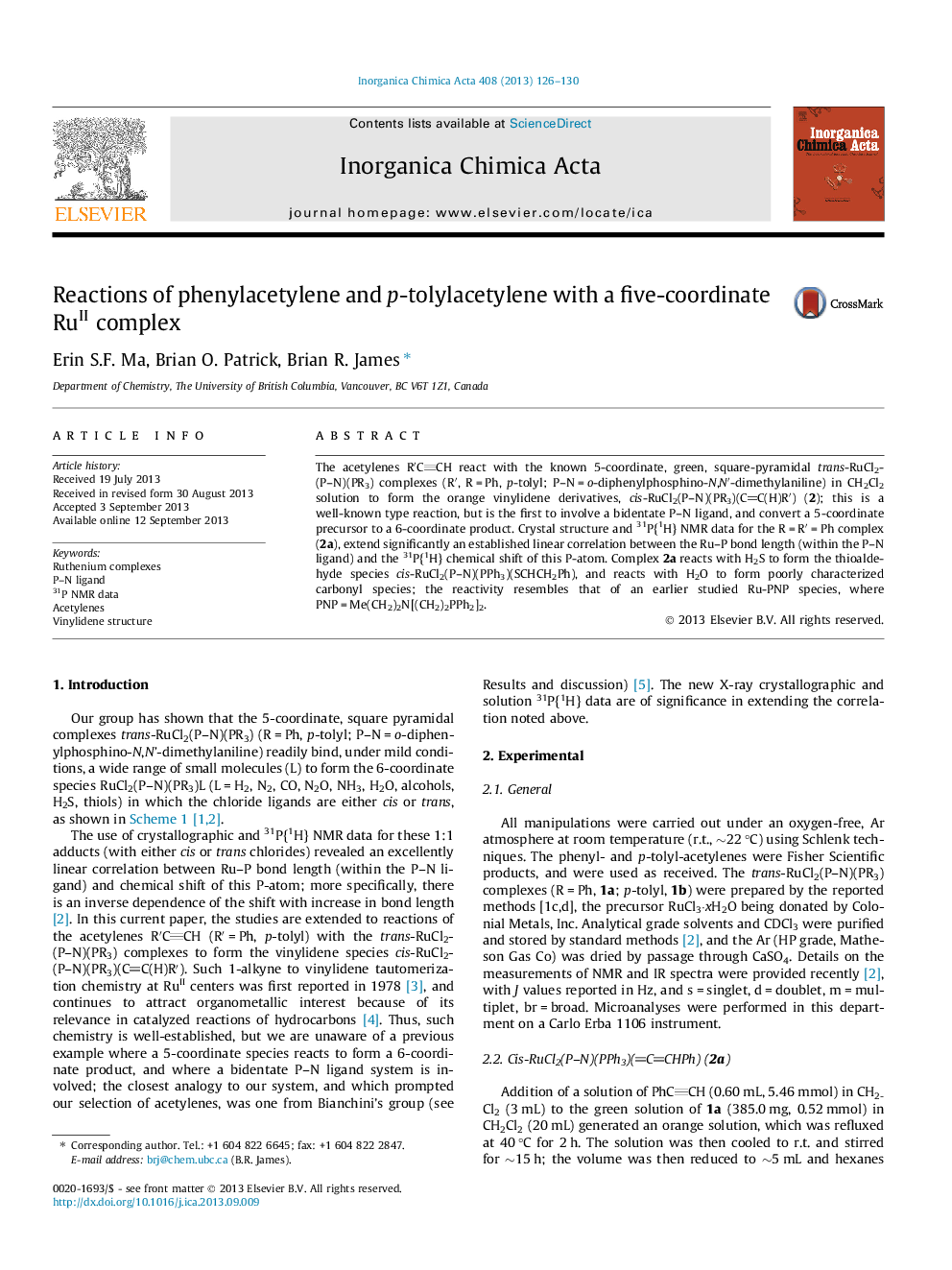| Article ID | Journal | Published Year | Pages | File Type |
|---|---|---|---|---|
| 1310222 | Inorganica Chimica Acta | 2013 | 5 Pages |
•Reactivity of 5-coordinate Ru(II) with acetylenes.•Formation of Ru(II)–vinylidene complexes.•Correlation between Ru–P bond lengths and 31P shifts.•Reactivity of vinylidene toward H2S and H2O.
The acetylenes R′CCH react with the known 5-coordinate, green, square-pyramidal trans-RuCl2(P–N)(PR3) complexes (R′, R = Ph, p-tolyl; P–N = o-diphenylphosphino-N,N′-dimethylaniline) in CH2Cl2 solution to form the orange vinylidene derivatives, cis-RuCl2(P–N)(PR3)(CC(H)R′) (2); this is a well-known type reaction, but is the first to involve a bidentate P–N ligand, and convert a 5-coordinate precursor to a 6-coordinate product. Crystal structure and 31P{1H} NMR data for the R = R′ = Ph complex (2a), extend significantly an established linear correlation between the Ru–P bond length (within the P–N ligand) and the 31P{1H} chemical shift of this P-atom. Complex 2a reacts with H2S to form the thioaldehyde species cis-RuCl2(P–N)(PPh3)(SCHCH2Ph), and reacts with H2O to form poorly characterized carbonyl species; the reactivity resembles that of an earlier studied Ru-PNP species, where PNP = Me(CH2)2N[(CH2)2PPh2]2.
Graphical abstractSelected 1-alkynes (R = Ph, p-tolyl) react with 5-coordinate RuII (1) to give a 6-coordinate vinylidene product (2), whose reactivity toward H2S and H2O is described; data for the Ru–PA bond length and the associated 31P-shift in 2 significantly extend an earlier established linear correlation between these parameters.Figure optionsDownload full-size imageDownload as PowerPoint slide
